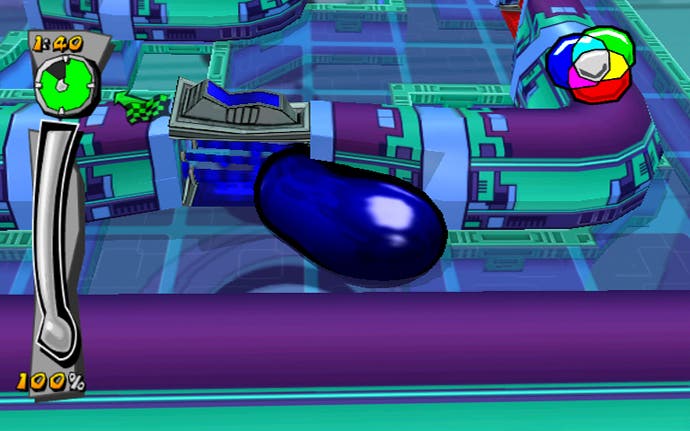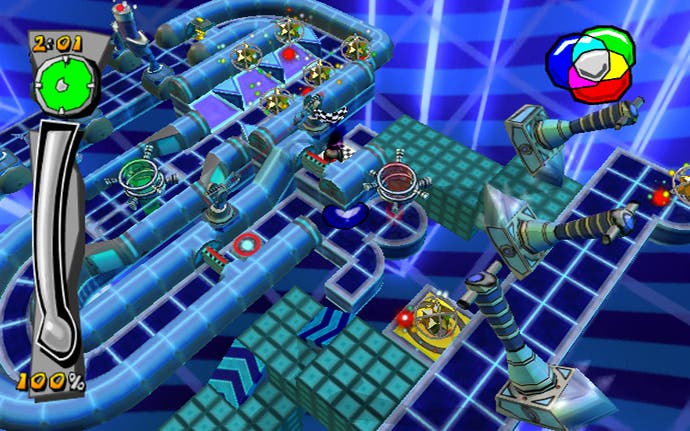Mercury Meltdown Revolution
Revelation, more like.

While it's not crucial to focus on all of a level's goals at once, doing so is the best way to ensure you receive a high score. There is no online leaderboard component to speak of, but Mercury is compelling enough that it will probably see plenty of gloating emails tossed back and forth in the aftermath of the game's release, swapping totals. Level design is consistently strong, too, and there are plenty memorable enough to justify the sort of repeat play that underpins a decent high-scores community. There will be frustration, but it's the healthy kind: with plenty of colour-coded doors and finishing posts, undulating platforms, narrow ledges and other obstacles to throw you off, it's a game where patience and skill need to go hand in hand. Thankfully only a few elements wind you up (like little bricks that need to be ushered onto switches, and pachinko-style layouts that confuse the camera), and the developer has made every effort to accommodate the player. The camera is very rarely blocked by the level design, a colour chart in the top-right corner helps you remember which colours need to be mixed together to get you through a coded door, and the game is smart enough to reward endeavour - discover a shortcut that significantly reduces your finishing time and your score skyrockets.
Where it falters it does so forgivably. It feels a bit awkward directing the free-view camera mode by tilting the Wiimote, but then it's hard to see how else it could be done without confusing the player or sacrificing camera rotation. Elsewhere the unlockable mini-games remain a bit short-lived in their appeal, and haven't been retooled with new Wiimote controls in some cases despite their obvious potential, while two-player head-to-head is also missing from the main game. Mind you, Ignition has been able to retain the recording features of the other console versions, allowing you to save your actions and play them back, either as a showcase, or to help analyse differences in your technique by watching a ghost move alongside you. The fact that the game offers both options reflects its generous presentation: rather like OutRun 2006, it's rare that you're forced to do something counter-intuitive in a menu, and even rarer that you find yourself longing for a feature that isn't there. As an example, all the navigation menus, even on the between-level screens, include thumbnails of the levels before and after so that you can see at-a-glance what's coming up and identify whether you've played it before or not.

By the usual superficial standards, it's hard to imagine Mercury selling consoles on its own, but the high standards of design - and in particular the game's ability to appeal to players at both ends of the skill spectrum - are the sorts of characteristics that a system-seller should aspire to encompass. It's a substantial undertaking, too, with breadth as well as depth, and with a control system that demonstrates the Wiimote's capabilities more fully than its direct competitors. It's hard to think of reasons not to recommend it. It might make you cross every now and then, but you never die unless it's your own fault, and the level of respect it has for players is something that gamers of all tastes will be able to appreciate.








